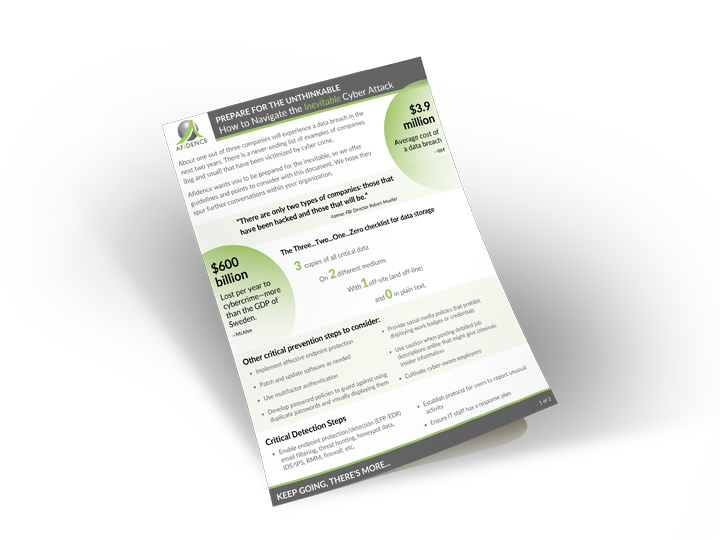In some industries, duplicate tasks can be a waste of company resources and could introduce unintended human error and loss of time. But in the IT world of managing systems and data, the duplication process (known as redundancy to IT leaders), is critical to preventing disaster. IT redundancy ensures an organization can provide continued operations or services in the instance of data loss or corruption. The right tools or team of technology consultants can ensure that your system and software assets are protected and provide for a timely recovery to restore interruptions to your business.
What Is IT Redundancy?
It’s important to ensure your organization has a solid understanding of what IT redundancy looks like for your business. Gartner defines IT redundancy as the provision of duplicate, backup equipment or links that immediately take over the function of equipment or transmission lines that fail. Redundancy enables you to recover from a device failure by switching to a spare device as soon as possible. It is the process of ensuring failover by storing data in more than one location. But why should this matter to IT directors or business leaders?
Why IT Redundancy Matters (3 Important Questions to Ask)
To fully understand why and how IT redundancy matters to your organization, it is the responsibility of the IT director to ask business leaders three important questions:
- What is the acceptable amount of downtime to core systems?
- What is the cost to the business (by hour or day) when systems are down?
- What are the types of core systems that require redundancy?
Businesses rely heavily on their IT systems; a service outage caused by a system failure can cause considerable downtime of operations. Depending on the size and geographical location of your organization, this could be difficult, time-consuming and costly to repair. As a result, redundancy is indispensable. Your IT system needs to remain resilient to failure in order to reduce the risk of interruption to your business.
These three questions help leaders understand that the more robust the redundancy, the higher the cost and complexity. Once these questions have been answered, IT directors can determine the level of risk that is acceptable to the business.
At the Risk of Being Redundant, IT Redundancy Matters
Redundancy equals more reliability. If one device fails, another one can automatically take over. By providing multiple paths for data traffic, you add a little more complexity, which reduces the probability of data loss or corrupted networks. But complexity is also an adversary to reliability. The more complex something is, the harder it is to understand, which leads to a greater chance of human error and a greater chance of a software bug causing a new failure. So, when managing systems and data, it’s important to balance redundancy against complexity.
Types, Tests and Technologies
There are two types of IT redundancy and both can be equally important to the safety and security of your data:
- Auto-failover: This is a form of complete redundancy that provides automated solutions offering high availability and disaster recovery for mission-critical applications in physical, virtual, cloud or hybrid cloud environments. This is also the most expensive form of IT redundancy.
- Manual switch-over: This is the controlled process of moving data over locally or to an off-site location. Roles between the primary and secondary (standby) sites are changed in a manner that avoids data loss. Downtime is usually experienced with this process, but it is done during a scheduled, planned amount of time to ensure the risk to data is low.
Both types of IT redundancy should be tested regularly so that you become familiar with the process and timing to help with your planning. All failover scenarios should be tested annually and steps should be documented to ensure systems are equipped with the ability to revert back to the primary. Your infrastructure relies heavily upon proper testing procedures for technologies such as on-prem and offsite backups, production systems (physical and virtual servers, applications, AI and machine-learning, etc.), network and switches.
When depending on other systems integrated with production systems, it’s important for IT directors to ask the following questions:
- What are the other systems?
- How do they failover to a redundant system?
- How do they switch back to the primary system?
Afidence Can Help You Duplicate Your Data
Technology in business today continues to impact the world profoundly. Modernization of IT infrastructure generates innovative solutions that allow small to medium enterprises to tap into their full potential. Unlike most firms, Afidence is not a reseller of any product or solution. Instead, we are singularly focused on providing unbiased recommendations that are tailored to the unique needs of your business.
From infrastructure as a service (IaaS) to cybersecurity, cloud migration and disaster backup and recovery, the future is bright for companies willing to protect mission-critical applications and data. Contact us today for unbiased, real-time business and technology solutions.

